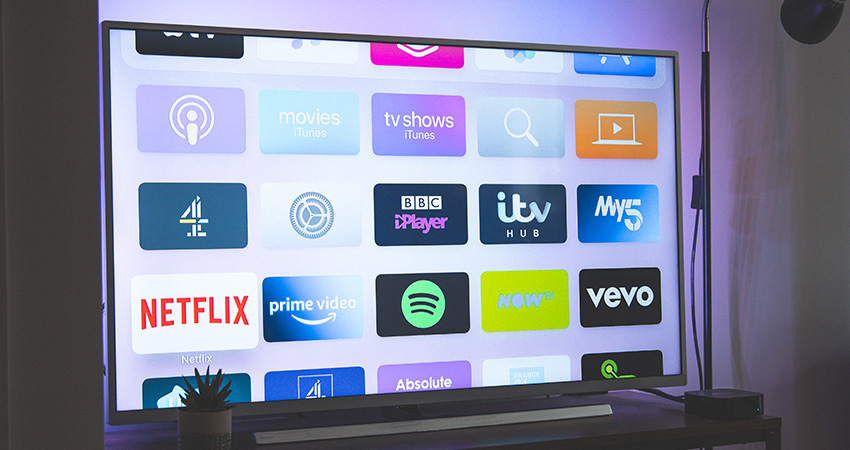CPG brands: own the set-top box (credit: Nicolas J Leclercq on Unsplash)
As vaccine eligibility opens up to the masses, a return to normal is in sight. CPG brands are re-engaging their reemerging customers and responding to shifts they faced long before COVID. That means we’ll see more brands exploring nano and micro influencers, dipping more than a few toes into ecommerce and transforming their data operations to recognize increasingly digital customer relationships.
As much has changed over the last year, CPG brands are also facing their own return to normal.
Long before DTCs and digital native brands rode the social, mobile, and ecommerce waves to steal mindshare and market share, the earliest, largest CPG brands were built with broad reach on television. And ever since, a digital divide has separated winners and losers across CPG. Now, with more people streaming more, TV has joined these other channels in the CPG digital marketers’ basket.
The playing field for winning minds and share across this new digital landscape has never been flatter. To fully capture the entire, new digital opportunity, CPGs need to rewrite their advertising playbook with lessons honed over decades, and some from the last year. Here are three chapters CPGs should consider adding:
Narrow Your Audience
This new post-COVID advertising playbook begins with a new way to consider audience. While brands with vast distribution rode the initial surge in demand last year, brands appealing to narrower audiences are emerging this year even stronger. Now, even the largest, broadest CPG brands are considering a more targeted approach, for the first time in TV.
Advanced audience engagement: As demand has long increased for healthier, organic, and local products and those with diverse ingredients and taste profiles, the reach of traditional television, print and radio has declined. All this makes broad marketing strategies less effective. Just because everyone has a mouth doesn’t mean you should feed every mouth the same message. Technology and data available today allow brands to more narrowly define audience segments ensuring impressions aren’t wasted.
Scale wins: As marketers narrow their audience focus, they’ll need to work with platforms with the scale to aggregate enough of their narrow audience to make advertising worthwhile. This centralization will also help advertisers better manage frequency and maximize their reach.
Activate Each Channel’s Purpose
Each channel and screen should serve its best purpose. While TV was for broad reach, and social and mobile for action, TV streaming can for both. Brands must re-imagine the stories and experiences they tell in each environment.
Win the trip/basket before there’s a trip/basket: While linear TV can still deliver broad reach in some moments, streaming can better enable discovery. Streamers are more open minded, and streaming is more data-rich, fueling CPGs’ ability to better and quickly understand what’s resonating with consumers, and adjust messaging quickly. And many of the audience and messaging strategies CPGs honed in social adapt easily to streaming.
Start with the screen: Campaigns in the new digital era must be relevant to each screen and platform. Advertisers who fail to develop content unique to each platform risk being lost to the new advertising innovations like shoppable video that savvy brands rely on today. Interactive ad formats enable CPGs to use TV and social media as a “lean back” screen and pass to mobile where shoppers can more naturally “lean in,” and buy your products at the swipe of a finger.
Leverage the power of content: CPGs have learned to evolve from in-store to online and similarly are adapting how they deliver advertisements. CPGs have eagerly tried new formats and content such as shoppable ads, sponsored programming and interactive content. By taking this new approach to content, CPGs can ignite with a new generation of shoppers and potential lifetime customers.
Respect Your (New) Relationships
New channels will bring potential new customers and new ways to build relationships with those customers. But there are also new strategies and tactics required to honor and sustain those relationships.
Build your first-party data via a value exchange: Consumers who are prompted to sign into platforms or willingly provide their information are consenting to share their data. It will be increasingly important or expected for brands who collect this data to offer consumers something in return, such as high-quality content. Soon we’ll see more and more companies offering some sort of value exchange to keep users logged in and get users to sign in.
Reduce audience overlap and duplication on the fly: While many CPGs manage campaigns across several teams focused on brand or performance objectives, channels, or platforms, marketers with singular ad platforms can better manage and optimize streaming campaigns alongside their other digital buys. Not only will they maximize their reach against key audiences, but they’ll ensure those that do see their ads aren’t seeing it too often across a variety of screens, channels, and publishers, in streaming and beyond.
As with many other consumer shifts over the last decade, the pandemic has fragmented even our sense of normalcy. While this has and will challenge CPGs to think differently, as did the shift to digital, mobile and ecommerce, take comfort in knowing that the lessons you’ve learned along the way can guide you as you find your new normal.
Jordan Rost is head of ad marketing for Roku

